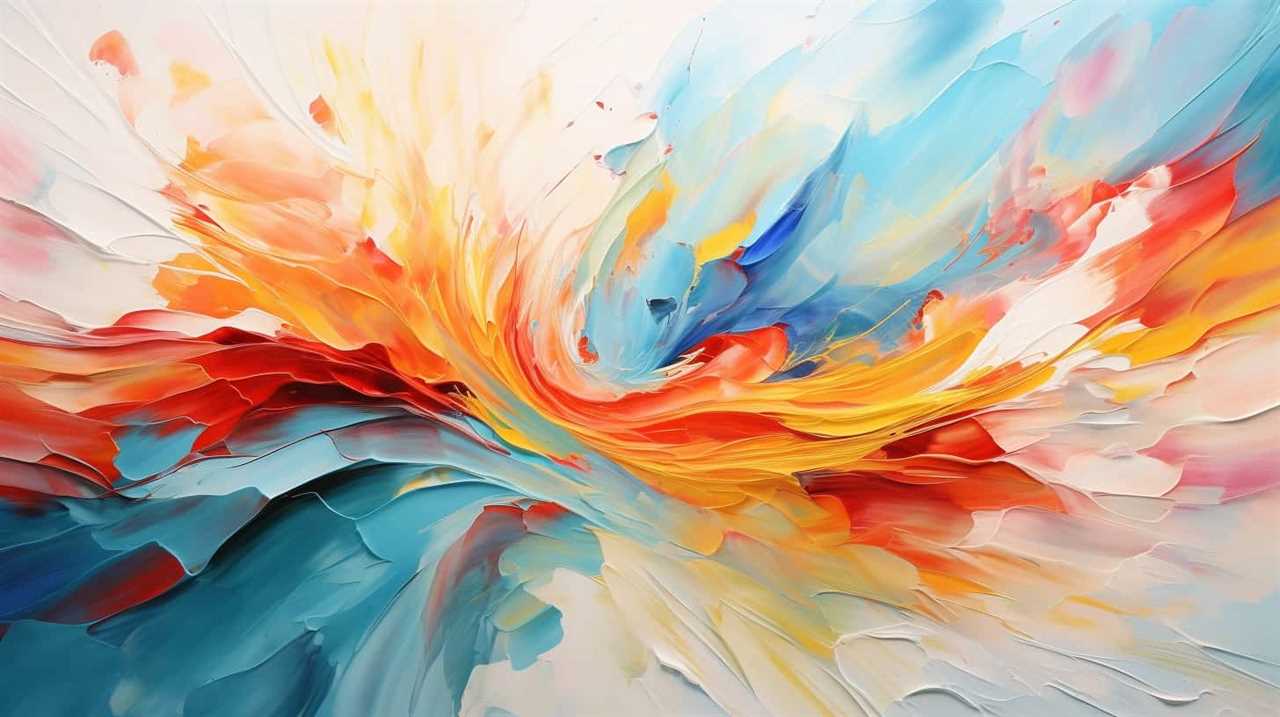In the constantly changing world of creativity, we are venturing into the digital realm where technology plays a crucial role in shaping our artistic expression.
As we navigate the digital influence on today’s creative scene, we are liberated from the constraints of traditional art forms, embracing new possibilities and pushing the boundaries of our imagination.
Through the intersection of art and digital media, we explore a world where digital tools and techniques redefine the way we create and communicate. Social media becomes our canvas, enabling us to connect, share, and inspire.
As the lines between physical and digital art blur, we delve into the realms of online art marketplaces and the preservation of digital artworks.
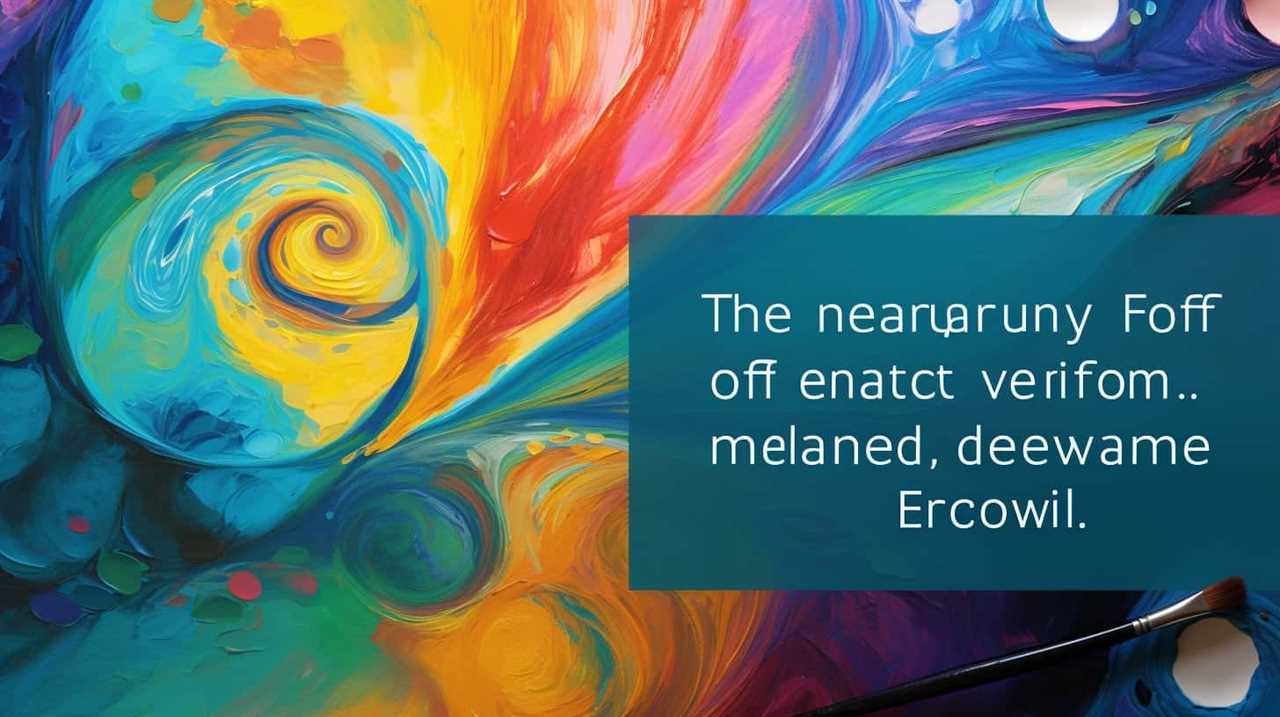
Join us as we uncover the future of art in the age of digital innovation.
Key Takeaways
- Digital tools and platforms have transformed the creation and consumption of art.
- Technology allows for the redefinition of traditional art forms.
- The intersection of art and digital media is redefining artistic boundaries.
- Rapid technological advancement opens up new possibilities for artistic expression.
The Evolution of Art in the Digital Age
In our digital age, the use of digital tools and platforms has significantly transformed the creation and consumption of art. We’re witnessing a redefining of artistic expression, thanks to the digital art revolution. With the advent of digital technology, artists now have access to an array of tools and techniques that were previously unimaginable. This has opened up new possibilities for creativity and experimentation.
Digital art has revolutionized the way art is produced and consumed. Artists can now create vibrant and immersive experiences through interactive installations, virtual reality, and augmented reality. These digital mediums allow for a level of engagement and participation that traditional art forms can’t replicate. The boundaries between artist and audience are blurred, as viewers become active participants in the artistic process.
Furthermore, digital platforms have made art more accessible than ever before. With just a few clicks, anyone can discover and appreciate a vast collection of artwork from around the world. This democratization of art has given voice to marginalized communities and allowed for a more diverse range of perspectives to be represented.

The digital art revolution has also challenged the traditional notions of art ownership and authenticity. With the rise of non-fungible tokens (NFTs), artists can now sell and authenticate their digital creations, ensuring that they receive proper recognition and compensation for their work.
Redefining Traditional Art Forms With Technology
With technology, we can redefine traditional art forms in exciting new ways. The integration of technology into the art world has opened up a world of possibilities, allowing artists to reimagine classics and create interactive installations that engage and captivate audiences like never before.
Here are three ways in which technology is reshaping traditional art forms:
- Augmented Reality (AR) Enhancements: By overlaying digital elements onto real-world environments, artists can breathe new life into traditional paintings, sculptures, and installations. Through AR, viewers can experience art in a more immersive and interactive manner, blurring the boundaries between the physical and digital realms.
- Interactive Installations: Technology enables artists to create dynamic and participatory installations that respond to the movements and actions of the audience. These installations invite viewers to actively engage with the artwork, transforming passive observers into active participants.
- Digital Preservation and Accessibility: Technology allows for the preservation and digitization of historical artworks, ensuring their longevity and accessibility to a wider audience. Through digitization, artworks can be viewed and studied remotely, breaking down barriers of time and location.
Exploring the Intersection of Art and Digital Media
When it comes to the intersection of art and digital media, we’re witnessing a redefinition of artistic boundaries. The use of technology has allowed artists to explore new creative techniques and push the limits of traditional art forms.
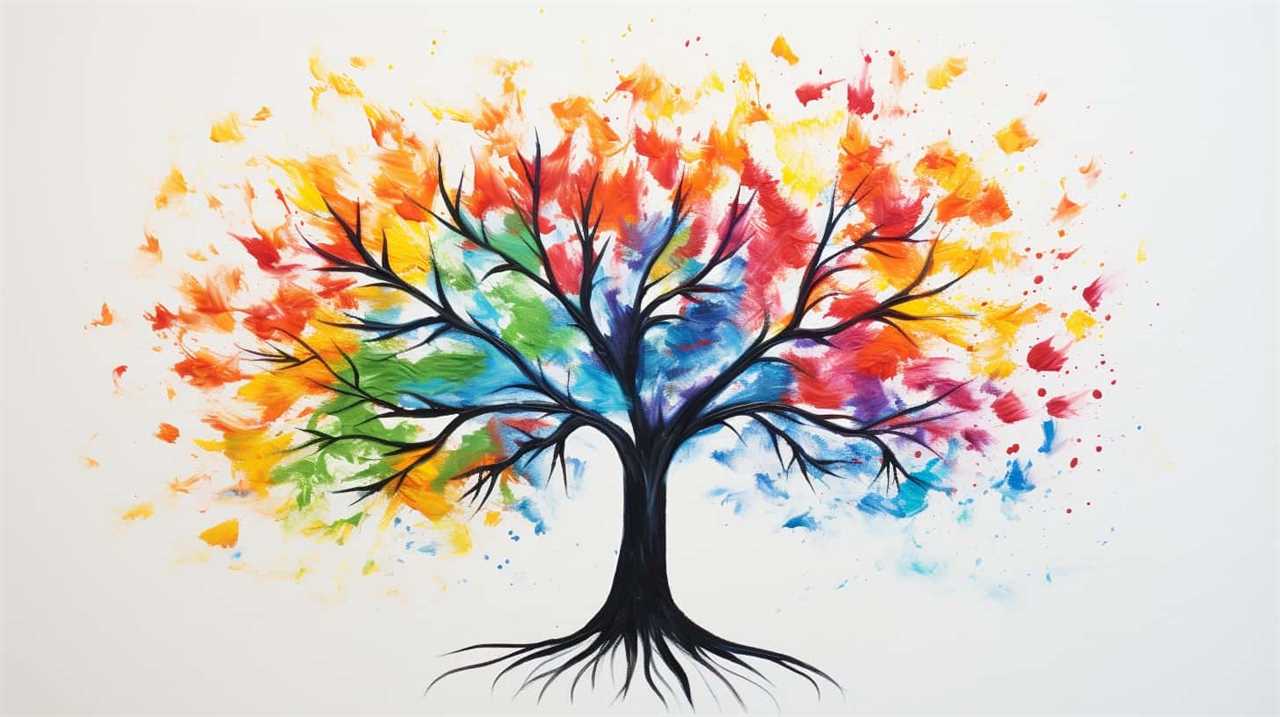
Digital media offers endless possibilities for experimentation, enabling artists to incorporate interactive elements, virtual reality, and augmented reality into their work. This convergence of art and technology is creating a dynamic and evolving landscape in the creative scene, shaping the way we perceive and engage with art.
Artistic Boundaries in Digital Media
Exploring the intersection of art and digital media reveals the limitless possibilities for pushing artistic boundaries in today’s creative scene. Digital artistry has revolutionized the way artists express themselves and connect with audiences. The rise of virtual exhibitions has provided a platform for artists to showcase their work to a global audience, transcending physical limitations.
Here are three ways in which digital media has expanded the artistic landscape:
- Enhanced creativity: Digital tools and software have opened up new avenues for artistic expression, enabling artists to experiment with different mediums and techniques.
- Interactive experiences: Virtual exhibitions allow viewers to engage with art in ways that were previously unimaginable, creating immersive and interactive experiences that blur the line between artist and audience.
- Global accessibility: Through digital platforms, artists can reach a global audience, breaking down geographical barriers and fostering a sense of inclusivity and collaboration.
The intersection of art and digital media has empowered artists to push the boundaries of their creativity and connect with a larger, more diverse audience.
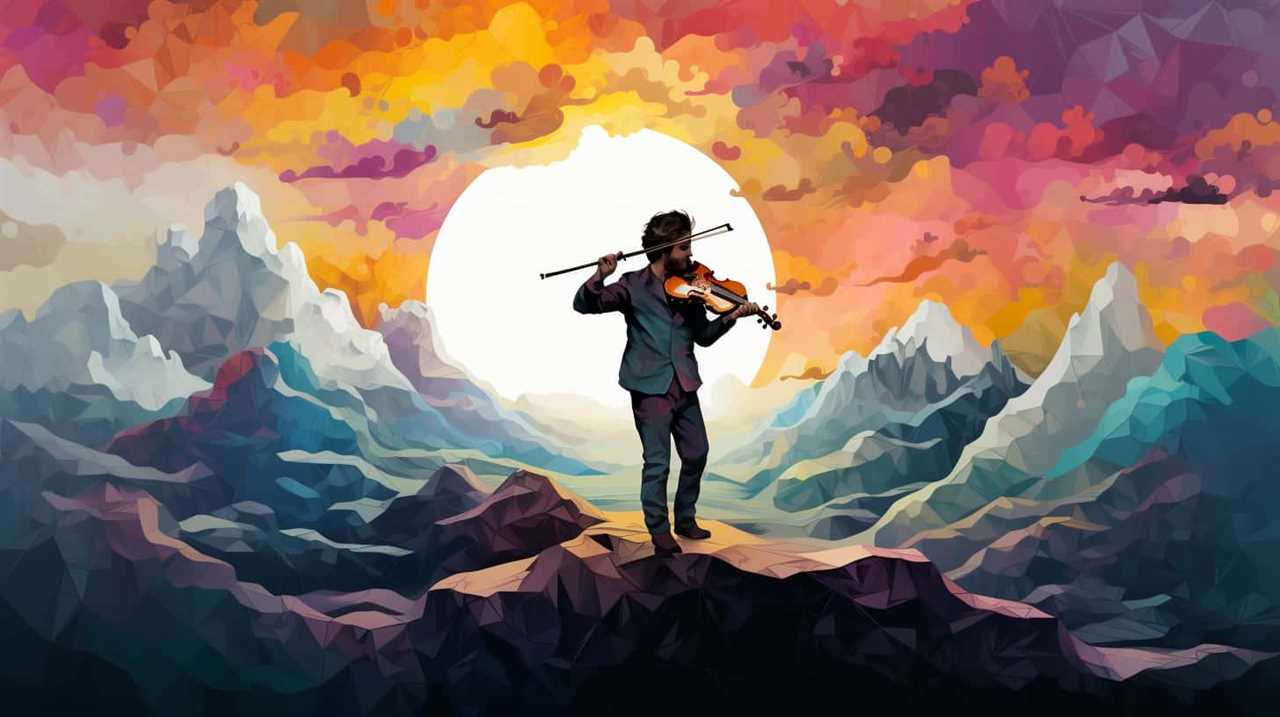
Evolving Creative Techniques
As artists in today’s digital landscape, we frequently explore evolving creative techniques at the intersection of art and digital media.
The rapid advancement of technology has opened up new possibilities for artistic expression, pushing the boundaries of what’s considered traditional art.
Digital art innovation has revolutionized the creative process, allowing us to experiment with an array of tools and techniques that were previously unimaginable.
From digital painting to 3D modeling, artists now have access to a wide range of digital tools that can enhance their creative vision.
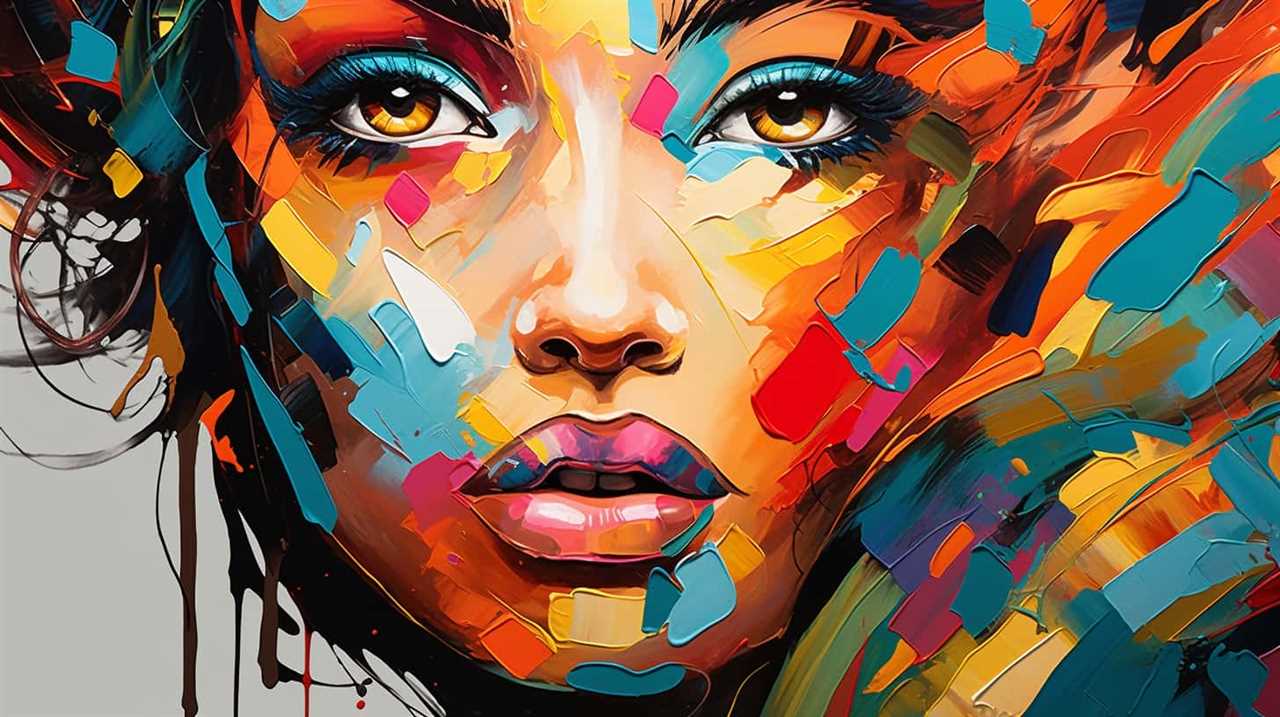
This has resulted in a dynamic fusion of traditional artistic skills with cutting-edge digital technologies, leading to the emergence of unique and captivating art forms.
Digital Tools and Techniques in Contemporary Art
In our exploration of today’s creative scene, we embrace the use of digital tools and techniques in contemporary art. The integration of technology has revolutionized the way artists create and express themselves, offering new avenues for experimentation and innovation. Here are three captivating aspects of digital art techniques and virtual reality art experiences that have captivated the attention of both artists and audiences:
- Digital Painting: Digital art techniques allow artists to create stunning and vibrant pieces using digital brushes and tools. This medium offers flexibility, enabling artists to experiment with different styles, textures, and colors, while also providing the ability to easily edit and revise their work.
- Interactive Installations: Virtual reality art experiences have transformed the way we engage with art. Through immersive installations, viewers can step into a digital world, becoming active participants rather than passive observers. Artists can manipulate virtual spaces, creating captivating and interactive environments that challenge conventional notions of art.
- Augmented Reality: With the rise of augmented reality, artists can overlay digital elements onto the real world, blurring the boundaries between what’s physical and what’s virtual. This technology allows for the creation of interactive and dynamic artworks that respond to the viewer’s movements and actions.
As we delve deeper into the impact of social media on artistic expression, it becomes evident that technology hasn’t only transformed the way art is created but also how it’s shared and consumed.
The Impact of Social Media on Artistic Expression
Social media has had a significant impact on artistic expression, influencing the way artists create and share their work.
The rise of platforms like Instagram and TikTok has allowed artists to reach a wider audience, gain recognition, and gain opportunities for collaboration.
However, this increased visibility and pressure for popularity can sometimes lead to a balancing act between staying true to one’s authentic artistic vision and creating content that caters to mass appeal.
Social Media’s Creative Influence
One significant way social media has influenced artistic expression is through the proliferation of digital platforms. Social media’s impact on artistic trends has been profound, leading to a democratization of creativity through social media.
Here are three key ways that social media has influenced artistic expression:
- Increased Accessibility: Social media has made art more accessible to a wider audience. Artists can now showcase their work on platforms like Instagram, reaching millions of people worldwide.
- Collaborative Opportunities: Social media has created new avenues for collaboration among artists. Artists can connect with each other, share ideas, and collaborate on projects, breaking down geographical barriers.
- Feedback and Engagement: Social media allows artists to receive instant feedback and engage with their audience in real-time. This direct interaction helps artists refine their work and gain valuable insights.
Balancing Authenticity and Popularity
Through social media’s influence on artistic expression, we navigate the delicate balance between authenticity and popularity. As artists, we strive for authenticity, the truest expression of our creative selves. However, in the age of social media, popularity often becomes a measure of success. It is essential to find a balance between staying true to our unique visions while also appealing to a wider audience.
| Balancing Authenticity and Popularity | |
|---|---|
| Authenticity | Popularity |
| Staying true to our creative vision | Appealing to a wider audience |
| Expressing our unique perspectives | Gaining recognition and followers |
| Fostering innovation and pushing boundaries | Creating content that goes viral |
To achieve this delicate balance, we must embrace innovation in our creative expression. We can use social media as a tool to showcase our authentic work while also exploring new ways to engage with our audience. By balancing innovation and authenticity, we can navigate the digital influence on today’s creative scene and find liberation in our artistic endeavors.
Digitization and Its Influence on Art Consumption
In the era of digitization, we’ve witnessed a significant shift in how we consume art. The rise of artificial intelligence (AI) has revolutionized the way art is both created and consumed. Here are three key ways digitization has influenced art consumption:
- AI and Art Consumption: With the advancement of AI, we now have algorithms that can analyze our preferences and recommend art that aligns with our tastes. This personalized approach to art consumption allows us to discover new artists and artworks that we may not have encountered otherwise, expanding our artistic horizons.
- Digital Art Preservation: Digitization has also brought about new challenges in terms of preserving and curating digital art. Unlike traditional artworks, digital art can easily be lost or altered. However, advancements in technology now allow us to preserve digital art in a way that ensures its longevity. This ensures that future generations can continue to appreciate and study digital artworks.
- Curation in the Digital Age: The digitization of art has also democratized the curation process. Online platforms and social media have given artists the ability to curate and showcase their own works, bypassing the traditional gatekeepers of the art world. This has led to a more diverse and inclusive art scene, where artists from all backgrounds have the opportunity to gain recognition and reach a global audience.
Virtual Reality and Immersive Art Experiences
Our exploration of virtual reality and immersive art experiences has revealed a multitude of transformative possibilities for the contemporary creative scene. The integration of mixed reality and interactive installations has opened up new avenues for artists to engage with their audiences in unprecedented ways. Through the use of cutting-edge technology, artists can create immersive environments that blur the boundaries between the physical and virtual worlds. This allows viewers to actively participate in the artwork, becoming active participants rather than passive observers.
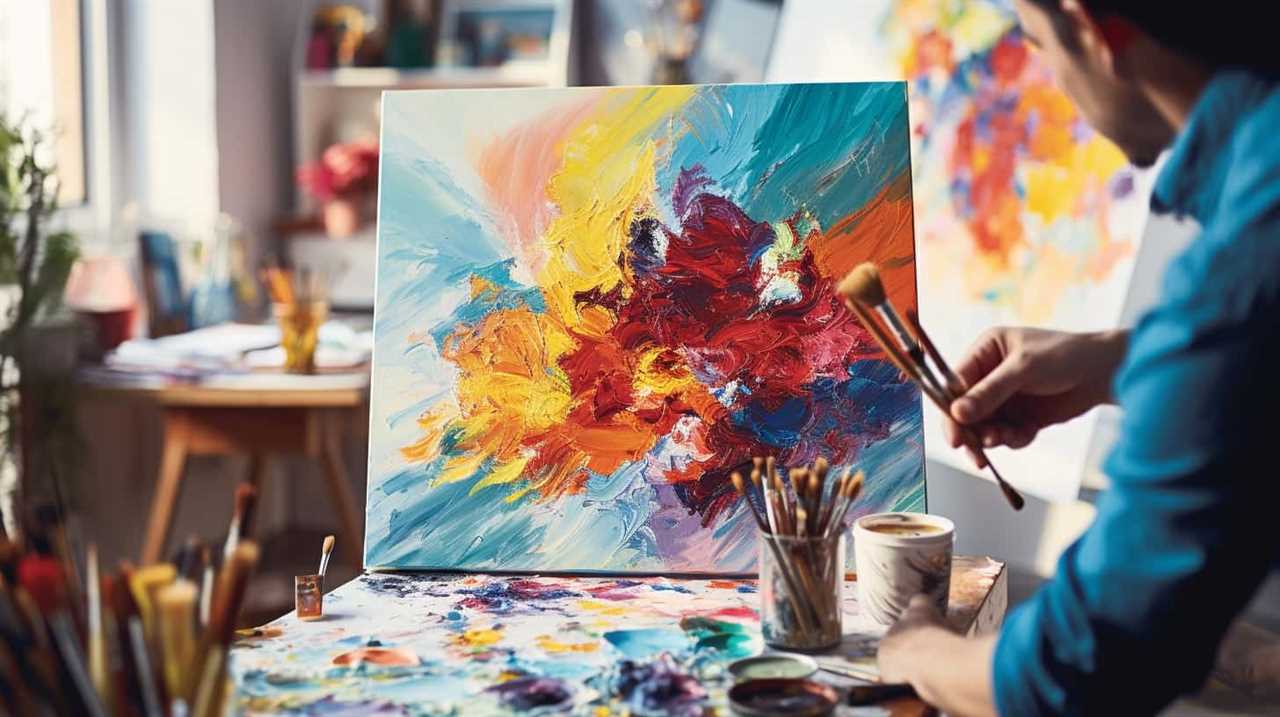
Virtual reality has also revolutionized storytelling in art. Artists can now transport viewers into a virtual realm where they can experience narratives in a deeply personal and visceral way. By immersing themselves in the story, viewers are able to develop a stronger emotional connection to the artwork and gain a deeper understanding of its message.
These advancements in virtual reality and immersive art experiences have liberated artists from the constraints of traditional mediums. They now have the ability to create interactive and immersive installations that push the boundaries of what’s possible in the art world. This shift towards embracing technology as a medium for artistic expression has opened up endless possibilities for creativity and innovation.
As we delve further into the digital realm, artists are finding new ways to push the boundaries of their craft and redefine what it means to create art in the 21st century. In the next section, we’ll explore the ways in which artists are embracing the digital medium in art creation.
Embracing the Digital Medium in Art Creation
To fully explore the impact of digital technology on today’s creative scene, we must embrace the digital medium as a powerful tool for art creation. In this age of digital artistry, artists are leveraging technology to push the boundaries of their creativity and express their unique visions. Here are three reasons why embracing the digital medium is essential for artists:
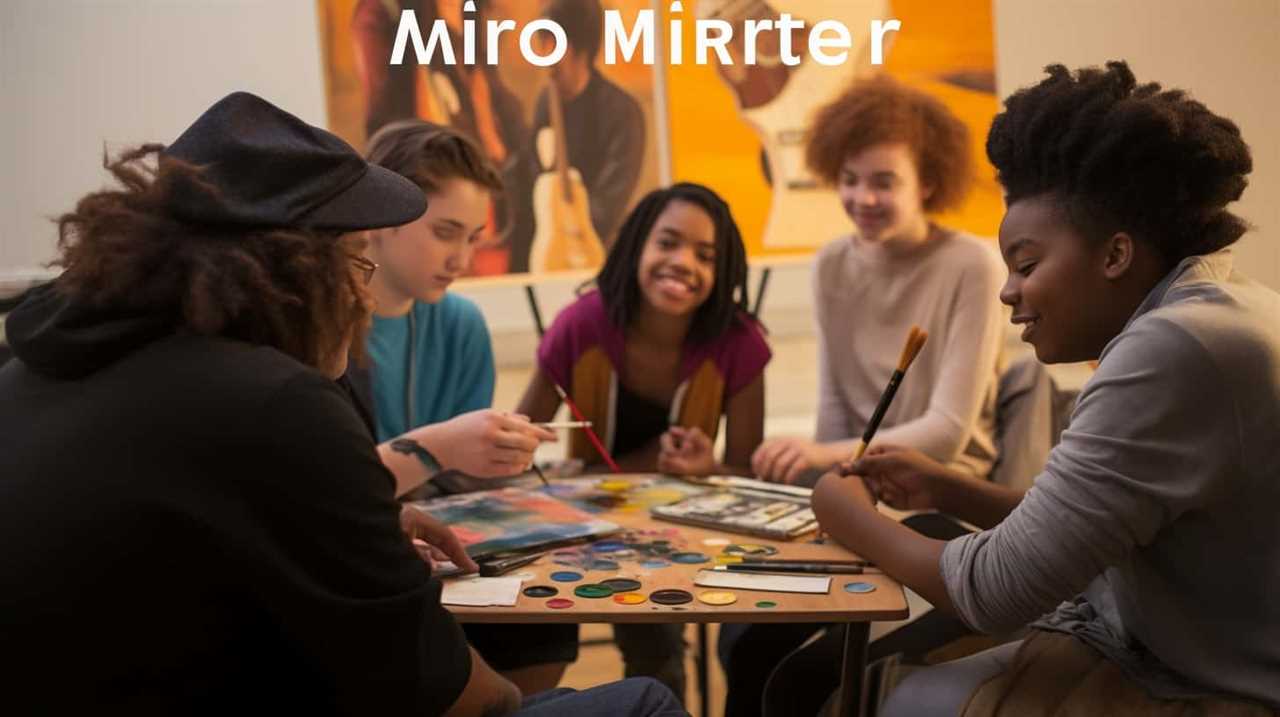
- Unleashing Boundless Creativity: The digital medium opens up endless possibilities for artists to experiment and explore new techniques. With digital tools, artists can easily manipulate and transform their artwork, allowing for greater flexibility and innovation in their creative process.
- Global Reach through Virtual Exhibitions: Virtual exhibitions have revolutionized the art world, breaking down geographical barriers and providing artists with a global platform to showcase their work. Through virtual exhibitions, artists can reach a wider audience and gain recognition on an international scale, liberating them from the constraints of traditional gallery spaces.
- Enriching Collaboration and Community: The digital medium fosters collaboration and community-building among artists. Online platforms and social media networks enable artists to connect, share ideas, and collaborate on projects, creating a vibrant and supportive creative ecosystem.
The digital medium has transformed the art creation process, empowering artists to push the boundaries of their creativity, reach a global audience, and cultivate a strong community of fellow artists. Embracing the digital medium isn’t only essential for artistic liberation but also for the advancement of the creative scene as a whole.
Challenges and Opportunities for Artists in the Digital Age
As artists in the digital age, we’re faced with both challenges and opportunities.
One of the biggest challenges is navigating the vast array of digital platforms available for showcasing our work.
However, these platforms also present us with unprecedented opportunities for exposure and reaching a global audience.
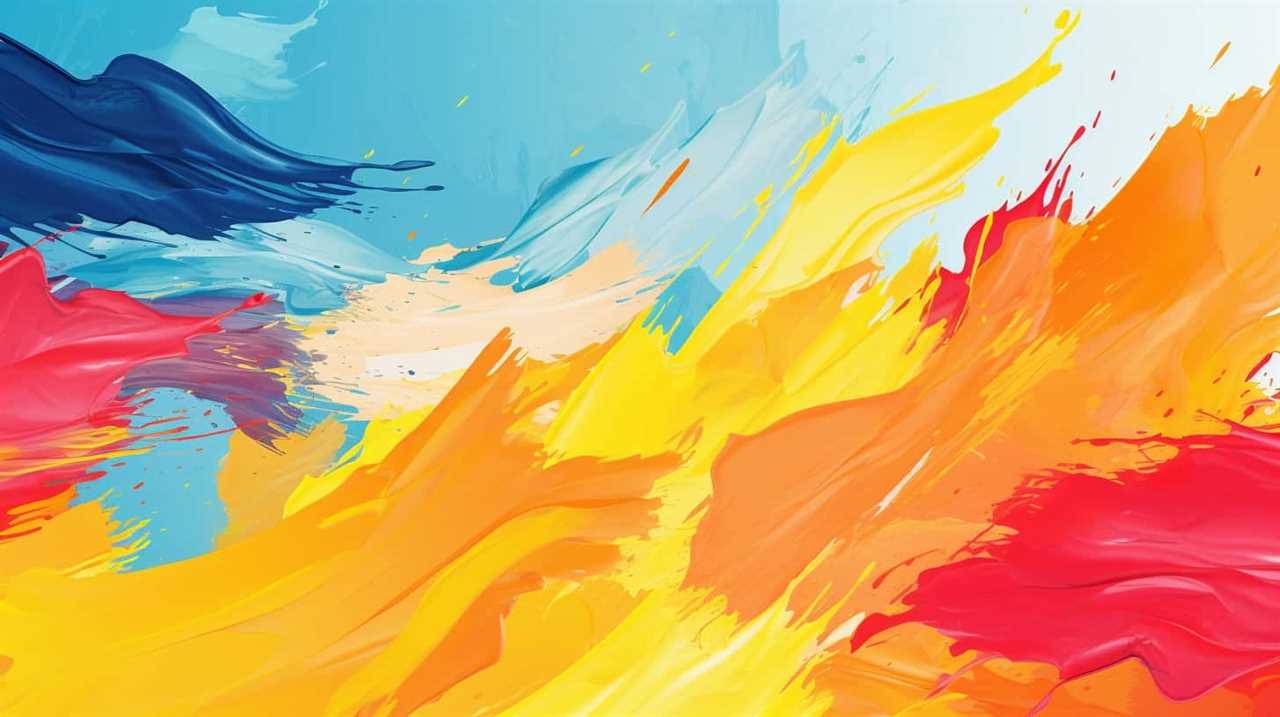
Additionally, the digital age brings about concerns regarding copyright protection in the digital realm, which we must address in order to safeguard our creative work.
Digital Platforms for Exposure
One can navigate the challenges and opportunities of digital platforms for exposure as artists in the digital age. The rise of online portfolios and the power of digital marketing have revolutionized the way artists promote and showcase their work. Here are three key aspects to consider:
- Online Portfolios: With the advent of digital platforms, artists can now create dynamic and interactive online portfolios to showcase their artwork to a global audience. These platforms allow artists to curate their work, provide detailed descriptions, and engage with potential clients or collaborators.
- Digital Marketing: Artists can leverage various digital marketing strategies to increase their visibility and reach. Through social media platforms, email marketing campaigns, and targeted advertising, artists can effectively promote their work to a wider audience, connect with potential buyers, and gain recognition in the art community.
- Global Exposure: Digital platforms provide artists with unparalleled opportunities for global exposure. Artists can now reach potential buyers, collectors, and art enthusiasts from around the world, transcending geographical boundaries and increasing their chances of success in the competitive art market.
As artists embrace digital platforms for exposure, it’s crucial to also address the issue of copyright protection in the digital realm.
Copyright Protection in Digital
How can we ensure copyright protection for artists in the digital age?

With the rise of digital platforms and the widespread availability of creative content online, artists face challenges in protecting their intellectual property from digital piracy. According to a study by the International Federation of the Phonographic Industry, digital piracy costs the global music industry an estimated $2.7 billion annually. This not only affects musicians and record labels, but also impacts other creative industries such as film, literature, and visual arts.
However, the digital age also presents opportunities for artists to take advantage of new technologies and platforms to protect their work. Blockchain technology, for example, offers a decentralized and transparent system for copyright registration and verification. Additionally, artists can utilize digital watermarking techniques to embed their ownership information into their work, making it easier to track and enforce copyright infringement.
By embracing these digital tools and staying informed about copyright laws, artists can safeguard their intellectual property and thrive in the digital age.
As we delve into the discussion of copyright protection in the digital age, it’s important to recognize the transformative power of digital art as a catalyst for social change.

Digital Art as a Catalyst for Social Change
Exploring the transformative potential of digital art in driving social change, we find ourselves at the forefront of a burgeoning movement. Digital art and activism have emerged as powerful tools for challenging societal norms and fostering positive change.
The impact of technology on our society can’t be overstated, as it serves as a catalyst for social transformation. In this context, digital art has proven to be an effective means of communication, allowing artists to express their thoughts and ideas in innovative and thought-provoking ways.
Consider the following examples:
- Digital art installations that shed light on pressing social issues, such as climate change, inequality, and human rights violations.
- Online platforms that facilitate collaborative artistic endeavors, connecting individuals from diverse backgrounds to collectively address social injustices.
- Interactive digital art experiences that encourage audience participation and promote dialogue on important social topics.
The rise of digital art has paved the way for a new era of social activism, where creativity and technology intersect to create meaningful change. As we delve deeper into the role of digital art in driving social transformation, it becomes evident that these artistic expressions have the power to challenge the status quo, inspire empathy, and mobilize communities.
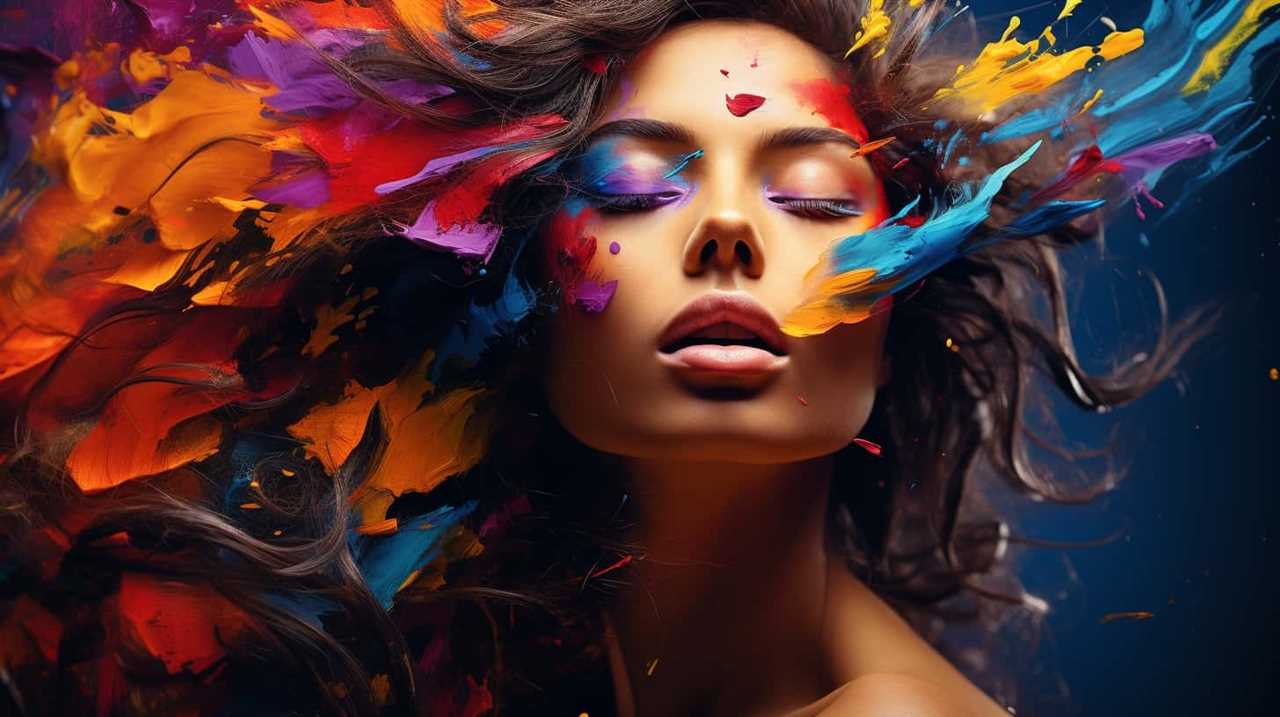
In the next section, we’ll explore the role of artificial intelligence in artistic creation and its potential to further revolutionize the digital art landscape.
The Role of Artificial Intelligence in Artistic Creation
When considering the role of artificial intelligence (AI) in artistic creation, several key points emerge.
Firstly, AI has significantly impacted the creative process, enabling artists to explore new realms of creativity and push boundaries.
However, ethical concerns surrounding AI art also arise, as questions about authorship, originality, and the blurring of human and machine creativity are raised.
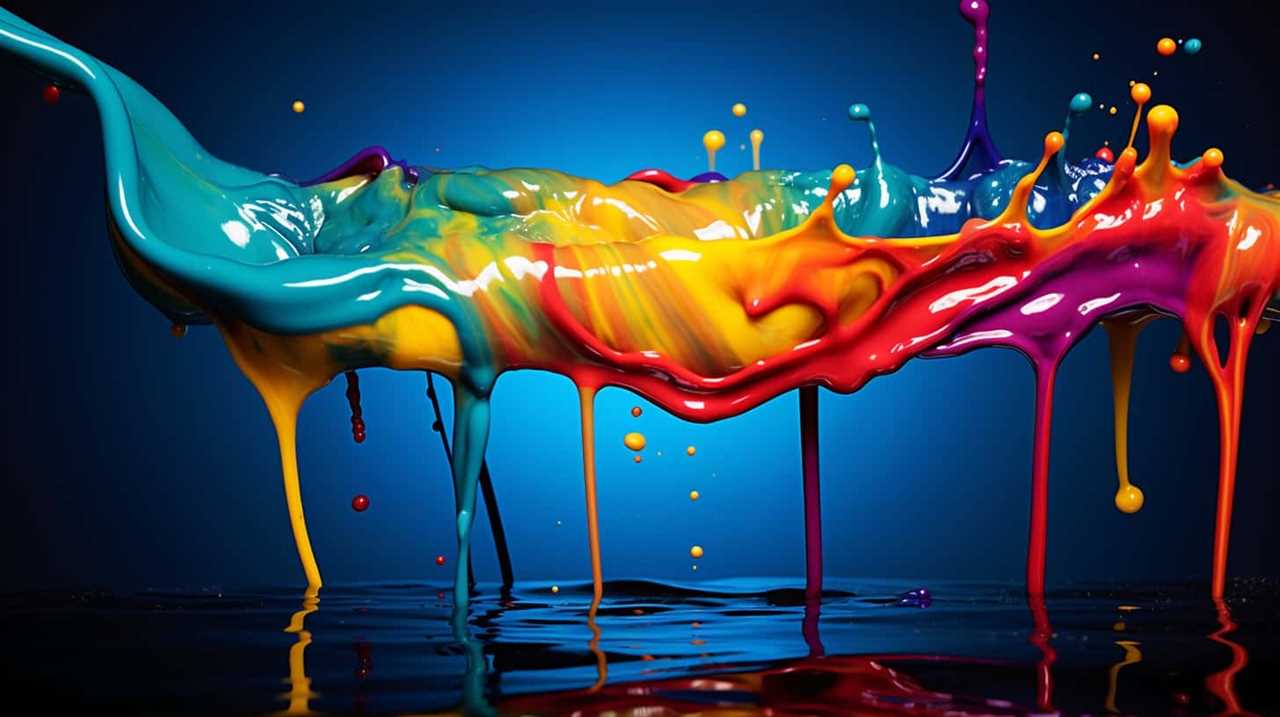
Despite these concerns, there’s also potential for collaboration between AI and human artists, opening up exciting possibilities for innovation and hybrid artistic expression.
Ai’s Impact on Creativity
Artificial intelligence frequently enhances our creative endeavors by actively contributing to the process of artistic creation. As we delve into the impact of AI on creativity, it’s important to acknowledge its significant role in design and the evaluation of AI-generated art.
Here are three noteworthy points to consider:
- Artificial intelligence in design: AI algorithms can assist in the design process by generating unique and innovative ideas, offering new perspectives to artists and designers.
- AI-generated art evaluation: With the help of AI, we can objectively evaluate and analyze art, allowing us to understand patterns, trends, and aesthetic preferences of different audiences.
- Enhanced creativity: AI technologies can inspire and stimulate creativity by providing artists with tools and resources that push boundaries and encourage experimentation.
As we explore the impact of AI on creativity, it’s essential to address the ethical concerns surrounding AI art and its implications for the future of artistic expression.

Ethical Concerns in AI Art
In our exploration of the impact of AI on creativity, we must address the ethical concerns surrounding the role of artificial intelligence in artistic creation.
As AI becomes increasingly involved in the creative process, it raises important questions about the ethical implications of relying on algorithms to produce art.
One key concern is algorithmic bias, which refers to the potential for AI systems to perpetuate existing biases and inequalities present in society. If AI algorithms are trained on biased data, they may produce artwork that reinforces discriminatory narratives or excludes certain perspectives.
This raises questions about the responsibility of artists and developers to ensure that AI art is inclusive and reflective of diverse voices. It also highlights the need for transparent and accountable practices in AI art creation to mitigate algorithmic bias and ensure ethical standards are upheld.
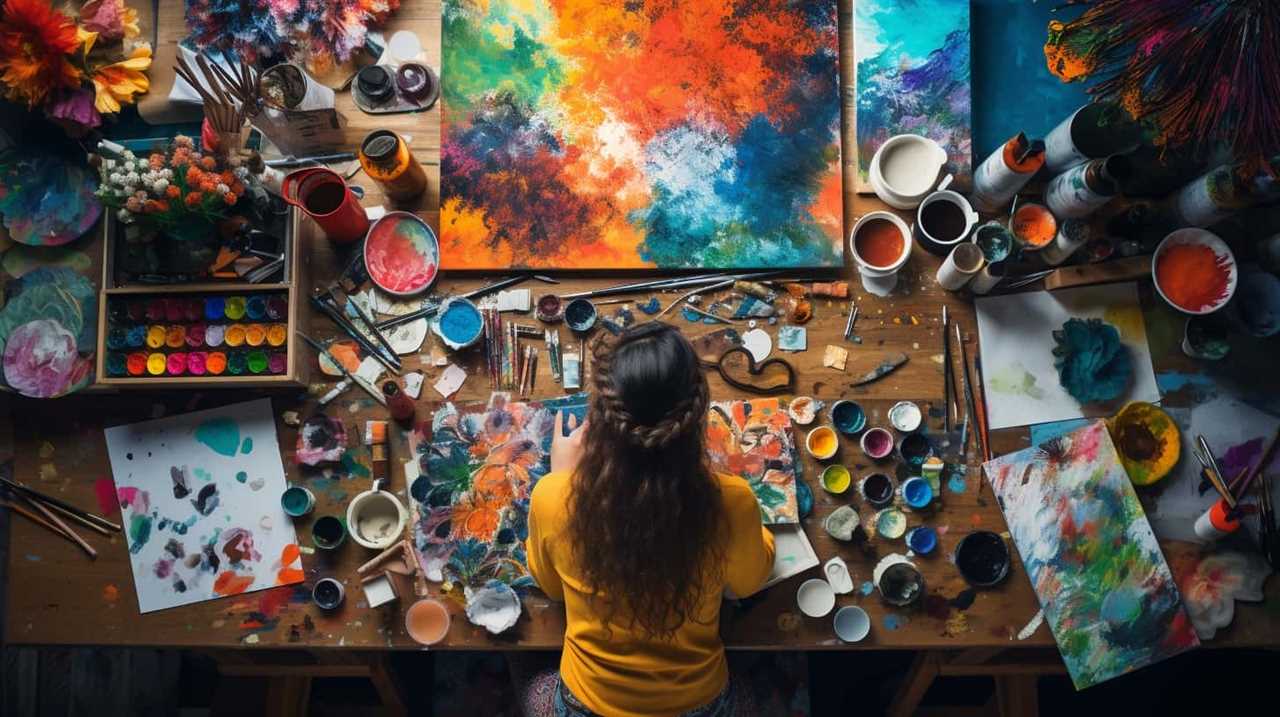
Collaborative Possibilities With AI
Exploring collaborative possibilities with AI in artistic creation involves harnessing the potential of artificial intelligence to enhance and expand our creative process. As we delve into the realm of collaborative AI projects, we discover a world of endless opportunities for artistic expression. Here are three subtopics that highlight the transformative role of AI in interactive art:
- Augmented Creativity: AI algorithms can assist artists in generating novel ideas, providing alternative perspectives, and pushing the boundaries of traditional artistic practices.
- Co-Creation with Machines: Through collaborative AI projects, artists can collaborate with intelligent machines to create unique artworks that blend human creativity with machine intelligence, resulting in groundbreaking and thought-provoking pieces.
- Interactive Experiences: AI enables the creation of immersive and interactive art installations, allowing viewers to engage with the artwork in dynamic and personalized ways, blurring the line between the artist, the artwork, and the audience.
Digital Platforms and Online Art Marketplaces
We actively engage with digital platforms and online art marketplaces to navigate the evolving landscape of the creative scene. These platforms have revolutionized the way artists showcase and sell their work, providing opportunities for exposure and financial gain that were previously inaccessible. Online art marketplaces such as Saatchi Art, Artsy, and Etsy have democratized the art world, breaking down barriers and empowering artists to reach a global audience.
To evoke an emotional response in the audience, let’s take a look at the impact of these platforms through a table:
| Impact of Digital Platforms and Online Art Marketplaces |
|---|
| Increased exposure and visibility for artists |
| Opportunities for artists to connect with collectors |
| Accessibility to a global audience |
| Enhanced artist-audience engagement |
| Financial empowerment for artists |
As artists, we can leverage these platforms to showcase our work, build a following, and generate income. The digital realm offers us liberation from traditional gatekeepers and allows us to dictate our own artistic journey. However, amidst this digital revolution, we must also address the challenges of preserving and archiving digital artworks.
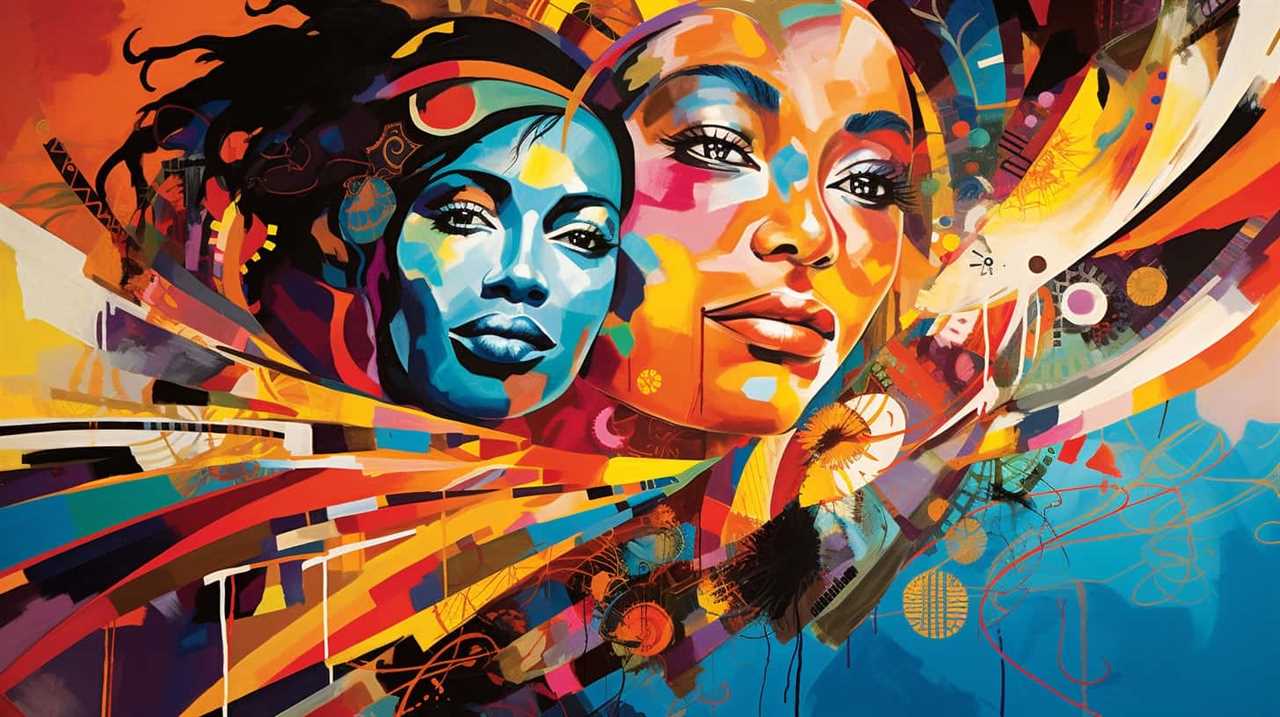
Transitioning into the next section, we must explore the importance of preserving and archiving digital artworks in this rapidly evolving creative landscape.
Preserving and Archiving Digital Artworks
Preservation and archiving of digital artworks is crucial in today’s rapidly evolving creative landscape. As our world becomes increasingly digitized, it’s imperative that we take steps to ensure the longevity and accessibility of these digital creations.
Here are three reasons why preserving digital heritage and practicing digital art conservation is of utmost importance:
- Cultural legacy: Digital artworks represent a significant part of our cultural heritage. Just as we preserve physical paintings and sculptures, we must also safeguard digital creations for future generations to appreciate and understand.
- Technical obsolescence: The rapid advancement of technology poses a unique challenge to the preservation of digital art. Without proper archiving, digital artworks risk becoming inaccessible due to changes in file formats, software compatibility, or hardware obsolescence.
- Artistic evolution: Digital art is a rapidly evolving medium that pushes the boundaries of creativity. By preserving and archiving digital artworks, we not only ensure their longevity but also enable future artists to build upon and explore new possibilities.
In order to navigate the digital influence on today’s creative scene, it’s imperative that we prioritize the preservation and archiving of digital artworks. By doing so, we not only safeguard our cultural legacy but also foster a sense of liberation and accessibility for future generations to enjoy and be inspired by the digital art of our time.
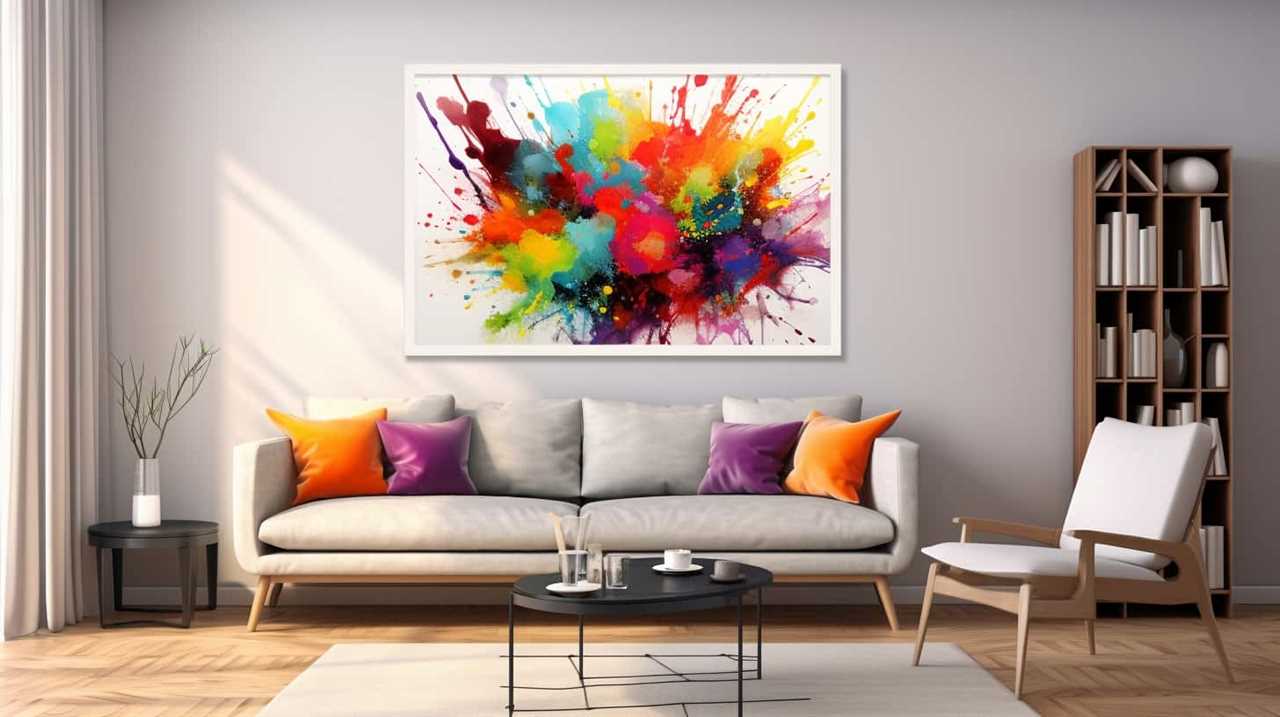
The Blurring Boundaries Between Physical and Digital Art
Continuing the discussion from the previous subtopic, it’s crucial to acknowledge the blurring boundaries between physical and digital art in today’s creative scene. As technology continues to advance, artists are exploring new ways to integrate digital art forms into traditional physical mediums, pushing the boundaries of what’s considered art.
The rise of digital art has created a dynamic landscape where artists are no longer confined to traditional tools and materials. This has led to the emergence of immersive installations, interactive sculptures, and augmented reality experiences that bridge the gap between the physical and digital realms. Artists are utilizing technologies such as virtual reality, 3D printing, and projection mapping to create captivating and innovative works that challenge our perceptions of art.
The blurring boundaries between physical and digital art forms have opened up new possibilities for artistic expression and audience engagement. Digital art allows for greater accessibility and democratization of the creative process, as artists can easily share their work online and reach a global audience. It also enables artists to experiment with new mediums and techniques, pushing the boundaries of what’s considered traditional art.
With the increasing integration of technology in art, it’s clear that the future of art in the age of digital innovation holds immense potential. Artists will continue to explore the possibilities offered by emerging technologies, pushing the boundaries of creativity and challenging traditional notions of art.

As we delve into the next section, we’ll delve deeper into the future of art in the age of digital innovation and the impact it will have on the creative scene.
The Future of Art in the Age of Digital Innovation
As technology continues to evolve, the digital revolution is shaping the future of art in unprecedented ways. The future of art is being transformed by the digital art revolution, ushering in a new era of creativity and innovation. Here are three key ways in which digital innovation is revolutionizing the art world:
- Democratization of Art: Digital platforms have made art more accessible than ever before, allowing artists to showcase their work to a global audience. This has democratized the art world, breaking down barriers and giving artists from diverse backgrounds the opportunity to gain recognition and success.
- Blurring Boundaries: Digital technology has blurred the boundaries between different artistic disciplines, allowing artists to explore new mediums and push the boundaries of traditional art forms. This fusion of art and technology has created exciting possibilities for experimentation and collaboration.
- Interactive and Immersive Experiences: The digital revolution has given rise to interactive and immersive art experiences that engage the audience in new and exciting ways. From virtual reality installations to interactive digital artworks, artists are using technology to create immersive environments that transport audiences into a whole new world.
The future of art in the age of digital innovation is bright and full of possibilities. With technology as their ally, artists have the freedom to explore new horizons and redefine the boundaries of creativity.
Frequently Asked Questions
How Has the Digital Age Impacted the Way Traditional Art Forms Are Perceived and Created?
The digital age has profoundly impacted the perception and creation of traditional art forms. With the rise of technology and social media, art is now more accessible, collaborative, and open to diverse interpretations, liberating both artists and audiences.
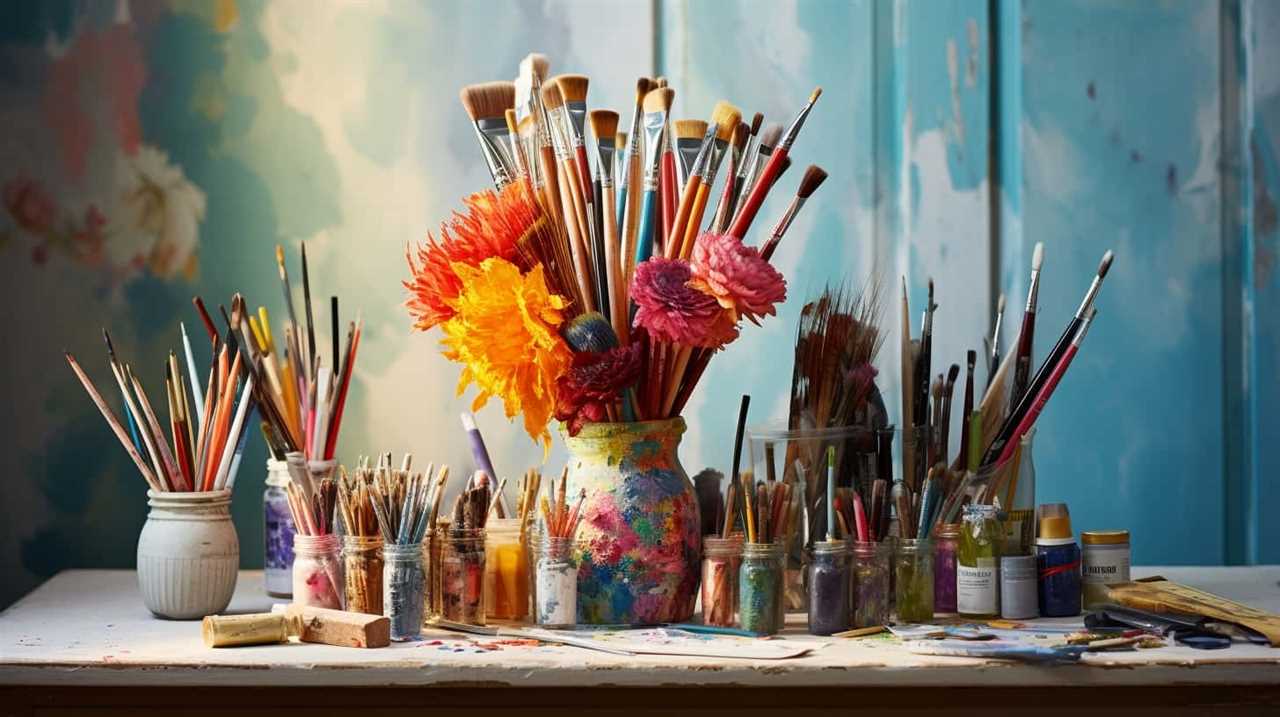
What Are Some Examples of Digital Tools and Techniques Used in Contemporary Art?
Digital painting and interactive installations are prominent examples of the digital tools and techniques used in contemporary art. These innovations allow artists to explore new dimensions, engage audiences in unique ways, and push the boundaries of traditional artistic expression.
How Has Social Media Influenced the Way Artists Express Themselves and Showcase Their Work?
Social media has revolutionized the way artists express themselves and showcase their work. It’s like a virtual gallery, allowing us to reach a global audience, receive instant feedback, and connect with other creatives. Our online presence has become essential for artistic liberation.
What Challenges Do Artists Face in Adapting to the Digital Age, and What Opportunities Does It Present?
Adapting to the digital age presents challenges for artists, but also offers exciting opportunities. The digital landscape demands constant learning and staying ahead of trends. It allows for global exposure, collaboration, and innovative forms of expression.
How Has the Emergence of Digital Platforms and Online Art Marketplaces Changed the Art Industry?
The emergence of digital platforms and online art marketplaces has revolutionized the art industry. With virtual exhibitions, online galleries, and online art auctions, artists now have wider reach and increased accessibility. Additionally, online art education has expanded, empowering artists and enthusiasts alike.
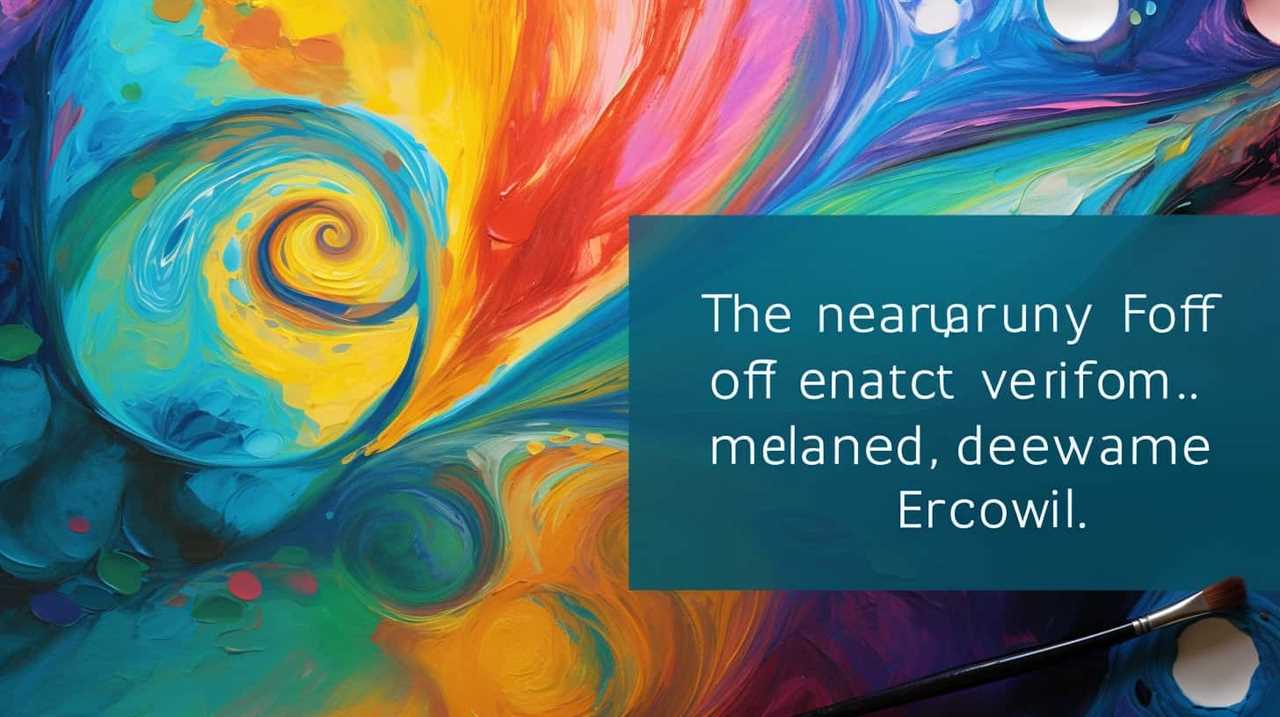
How Have Digital Influences Shaped the Legacy of Creativity in Today’s Creative Scene?
Digital influences have revolutionized the way creative works are shared and appreciated, but timeless quotes on artistic legacy remind us of the enduring impact of creativity. In today’s creative scene, these influences continue to shape how artists communicate their vision and leave their mark on the world.
Conclusion
As we navigate the digital influence on today’s creative scene, we witness the evolution of art in the digital age. With technology redefining traditional art forms and the intersection of art and digital media being explored, artists are utilizing digital tools and techniques to create contemporary artworks.
The impact of social media on artistic expression can’t be ignored, as digital platforms and online art marketplaces continue to shape the art world.
As we preserve and archive digital artworks, the boundaries between physical and digital art blur, leaving us to ponder the future of art in the age of digital innovation.
Lauren’s talent in writing is matched by her passion for storytelling. Her love for books and deep understanding of culture and entertainment add a distinct flavor to her work. As our media and press contact, Lauren skillfully bridges the gap between afterQuotes and the broader media landscape, bringing our message to a wider audience.



